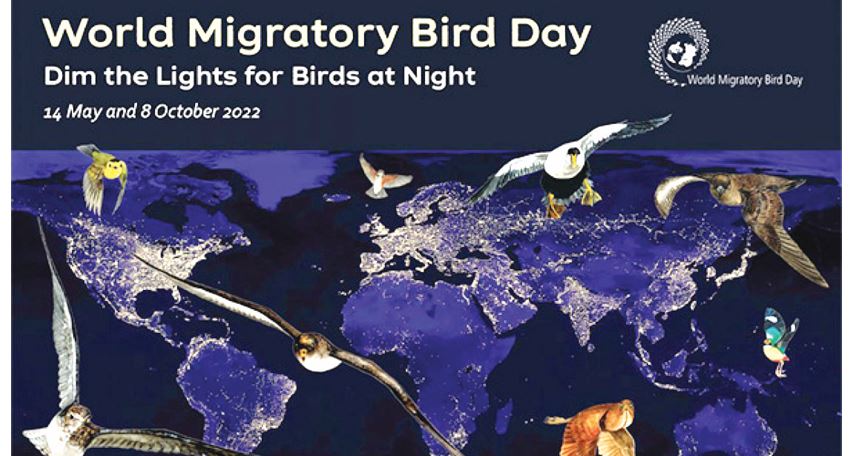- Tuesday, 20 January 2026
Save migratory birds from light pollution
Kathmandu, May 14: World Migratory Bird Day is being celebrated today with the theme of “Dim the Lights for Birds at Night,” to create awareness about bird conservation and focus the steps that individuals, communities, and the governments can take to reduce the impact of light pollution on migratory birds.
The day is officially celebrated on the second Saturday of May across the globe specially focusing on summer migratory birds asking to take action to conserve migratory birds. This year, the day is focused on the impact of light pollution on birds.
Light pollution attracts and confuses migrating birds. They are likely to land in areas where they are more vulnerable to accidents and other dangers, and the message is for people around the world to turn off the lights during the night when they are not in use.
It saves money as well as nature, said senior ornithologist Dr. Hem Sagar Baral.
“Night flying birds follow the lights of stars and the moon navigation and when they find more powerful artificial lights in the earth, they might be affected in many ways like landing problem and losing their track of migration,” Dr Baral said.
According to the findings, at least 100 million birds die every year from colliding with buildings in the United States alone. Artificial light also impacts birds during breeding and winter seasons, disrupting feeding and other vital behaviours.
Light pollution is increasing in Nepal as well, and Dr. Baral asked to turn off or dim the lights of houses, hotels, business houses and party palaces, if possible, to save nature.
The day is celebrated twice a year in May and October, aiming to draw attention to the threats faced by the migratory birds, their habitats and their importance in ecology, Dr Baral said.
According to a research done by the University of Exeter and a report published in ScienceDaily in 2021, Global light pollution has increased by at least 49 per cent over 25 years.
This figure only includes light visible via satellites, and scientists estimate the true increase may be significantly higher -- up to 270 per cent globally and 400 per cent in some regions.
According to the United Nations, increasing light pollution is a growing threat to wildlife, including many species of migratory birds. Light pollution can change birds' migration patterns, foraging behaviours, and vocal communication.
Attracted by artificial light at night, particularly when there is low cloud, fog, rain or when flying at lower altitudes, migrating birds become disorientated and may end up circling in illuminated areas.
Depleted energy reserves put them at risk of exhaustion, predation, and fatal collision with buildings.







-square-thumb.jpg)









